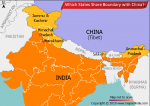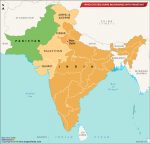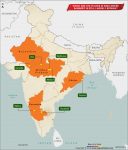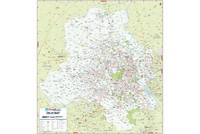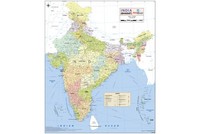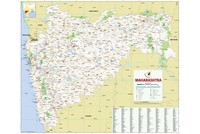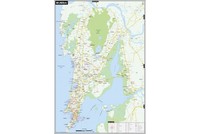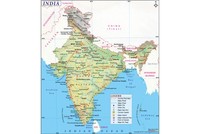The first female chief minister of West Bengal and founder of the Trinamool Congress, Mamata Banerjee was born on January 5, 1955 in Kolkata to Promileswar and Gayetri Devi. Her father died when she was 9. Banerjee got involved with politics from an early age and joined the West Bengal unit of the Congress Party. By the late 1970s she was a senior functionary of the state Mahila Congress.
In a profile of Banerjee in the Outlook magazine in November 2012, the senior journalist S.N.M. Abdi wrote: “After her father’s death, her mother sold 12 bighas of land they owned in Rampurhat and handed the money to her eldest son, Ajit, to invest in business so that the family could have a regular income. But it was Mamata — the second eldest — who held the family together. She woke up at 3.30 a.m. every day to cook for her four brothers and a sister and mother before going to college. She recalls gazing in bewilderment at her college friends when they passionately discussed clothes or films —luxuries she couldn’t afford to even think about in those days.”
She secured several degrees including an honours in History, and degrees in law and education. In the 1984 general elections, held in the aftermath of Prime Minister Indira Gandhi’s assassination, Banerjee shot to political prominence by defeating senior Communist leader Somnath Chatterjee from the Jadavpur constituency. She also became the Indian Youth Congress general-secretary. She lost her Lok Sabha seat in the 1989 general elections but won in the 1991 polls, which were held shortly after Rajiv Gandhi was killed by a suicide bomber.
Describing how difficult it was for her to come to terms with his assassination, Banerjee wrote in her 2012 book ‘My Unforgettable Memories’: “I did not speak to anyone for a week. I simply could not eat a morsel. I used to shut myself up in my room and cry. It has been so many years, but even today, I feel his presence in every step I take…”
She would go on to win the Kolkata South Lok Sabha seat in the 1996, 1998, 1999, 2004 and 2009 polls. She became the union minister of state for human resources development, women and child development, and youth affairs and sports in the Narashima Rao government in 1991. But because of some differences with the Centre she remained minister only till 1993.
She left the Congress in 1997 and founded the All India Trinamool Congress.
The Trinamool joined the National Democratic Alliance (NDA) in 1999 and Banerjee became the union railway minister. However, in 2001 she left the NDA and joined hands with the Congress for the West Bengal assembly polls. She returned to the NDA four months before the 2004 general elections as minister of coal and mines. But the NDA lost the polls and the Congress-led UPA came to power, with Manmohan Singh becoming prime minister.
In 2005 Banerjee led protests against the Buddhadev Bhattacharya government’s land acquisition policies in West Bengal, alleging that they were anti-farmer. Her party did badly in the Kolkata civic polls in 2005 and lost the state elections in 2006 as well, with the Left retaining its stranglehold over West Bengal’s politics.
Towards the end of 2006 she led an agitation against the Singur Tata car project. In 2007 she was part of a growing movement against the state government’s actions in Nandigram where it had planned to develop an industrial hub. For the first time in decades the tide of public opinion in West Bengal seemed to be going against the Left.
The Trinamool-Congress alliance won 26 seats in West Bengal in the 2009 Lok Sabha elections. Banerjee became the union railway minister for the second time. In a sign of things to come, her party swept the Kolkata Municipal Corporation polls in 2010.
The 2011 West Bengal assembly elections proved to be historic. The Left front was ousted from power after 34 years, with the Trinamool-led alliance securing 227 seats. Banerjee, who became the eight chief minister of West Bengal, hailed the landslide win as a “victory for democracy, a victory for the people, a victory for maa, mati, manush [The Trinamool slogan that means ‘mother, soil, people’]”.
Banerjee has an image of a street-fighter with simple tastes and habits, someone who has fought hard to rise from a humble background to the top of West Bengal politics.
In his simultaneous review of ‘My Unforgettable Memories’ and Monobina Gupta’s biography of Banerjee, the academic and social scientist Pratap Bhanu Mehta wrote in Outlook in March 2012: She [Mamata Banerjee] may be mercurial, change her mind, but there is no trace of chicanery and cold calculation in her actions. In some sense her persona is a revolt against two social tendencies. Politically it is a revolt against politics as a form of dissimulation, and the cowardice and complicity it breeds…But more endearingly, it is also a revolt against the stylised self-presentation of the enlightened Bengali upper classes.”
Also on this day:
1893 — Paramahansa Yogananda, yoga teacher and spiritual guru, was born
1932 — Kalyan Singh, chief minister of Uttar Pradesh, was born
1934 — Murli Manohar Joshi, BJP leader and union minister, was born
1941 — Mansoor Ali Khan Pataudi, captain of Indian cricket team, was born
1952 — Iftikhar Ali Khan, Indian cricketer, passed away
1982 — Ramchandra Chitalkar, Indian film music composer, passed away
1986 — Deepika Padukone, Hindi film actress, was born

